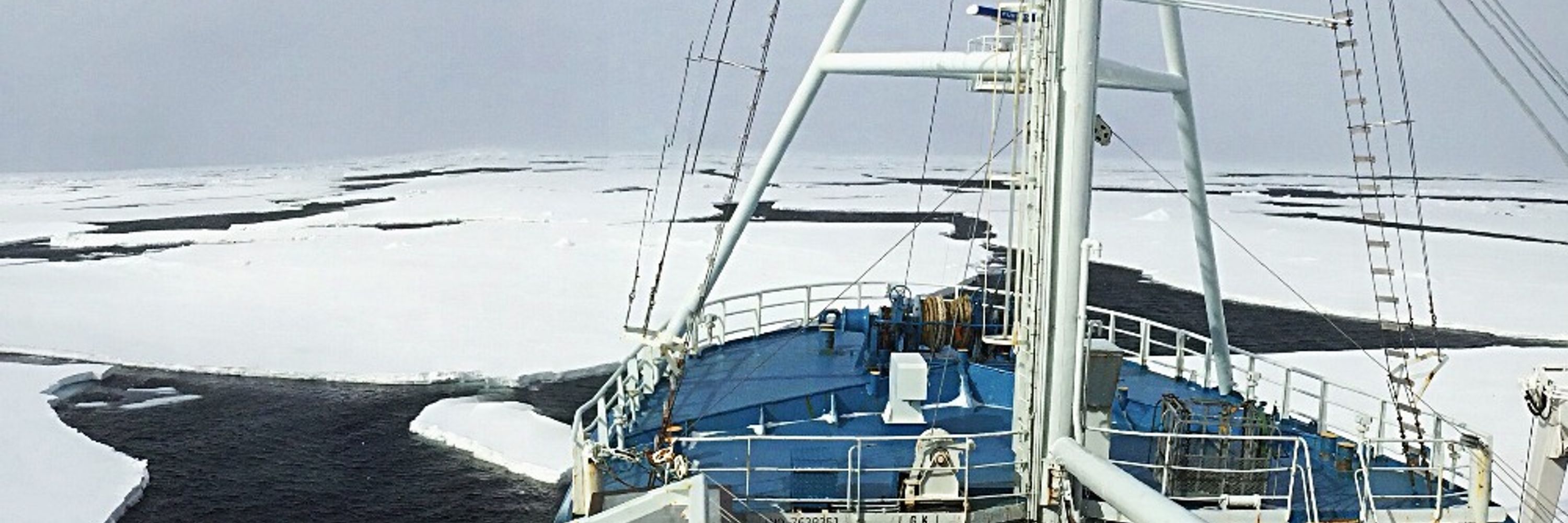
Views, thoughts, and opinions expressed here are only my own.
+ Polar climate change: zacklabe.com/arctic-sea-i...
+ Global climate change indicators: zacklabe.com/climate-chan...
+ #Arctic sea ice extent: zacklabe.com/arctic-sea-i...
+ #Antarctic sea ice: zacklabe.com/antarctic-se...
Join us for a discussion on the latest global and U.S. climate change data, plus what these trends mean for planning and expectations this winter.
🗓️Tuesday, December 16 | 12pm ET
🔗Register: buff.ly/HOGFZIP
Join us for a discussion on the latest global and U.S. climate change data, plus what these trends mean for planning and expectations this winter.
🗓️Tuesday, December 16 | 12pm ET
🔗Register: buff.ly/HOGFZIP
This was 1,320,000 km² below the 1981-2010 November average. Data from the @nsidc.bsky.social: nsidc.org/data/seaice_...
This was 1,320,000 km² below the 1981-2010 November average. Data from the @nsidc.bsky.social: nsidc.org/data/seaice_...

This was 1,930,000 km² below the 1981-2010 average. November ice extent is decreasing at about 4.85% per decade. Data: @nsidc.bsky.social at nsidc.org/data/seaice_...
This was 1,930,000 km² below the 1981-2010 average. November ice extent is decreasing at about 4.85% per decade. Data: @nsidc.bsky.social at nsidc.org/data/seaice_...
More info on this data: climatedataguide.ucar.edu/climate-data...

More info on this data: climatedataguide.ucar.edu/climate-data...
Data from doi.org/10.24381/cds...

Data from doi.org/10.24381/cds...
• about 1,110,000 km² below the 2010s mean
• about 1,600,000 km² below the 2000s mean
• about 2,310,000 km² below the 1990s mean
• about 2,810,000 km² below the 1980s mean
More: zacklabe.com/arctic-sea-i...

• about 1,110,000 km² below the 2010s mean
• about 1,600,000 km² below the 2000s mean
• about 2,310,000 km² below the 1990s mean
• about 2,810,000 km² below the 1980s mean
More: zacklabe.com/arctic-sea-i...
Data from @copernicusecmwf.bsky.social ERA5 reanalysis.

Data from @copernicusecmwf.bsky.social ERA5 reanalysis.
Sea surface temperature data from NOAA OISSTv2.1 (downloads.psl.noaa.gov/Datasets/noa...).

Sea surface temperature data from NOAA OISSTv2.1 (downloads.psl.noaa.gov/Datasets/noa...).
Data from NOAAGlobalTemp v6.0.0: www.ncei.noaa.gov/products/lan...
Data from NOAAGlobalTemp v6.0.0: www.ncei.noaa.gov/products/lan...
#ClimateChange #SciComm #OpenScience #OpenData #DataViz

#ClimateChange #SciComm #OpenScience #OpenData #DataViz
This graphic will now be updated weekly at zacklabe.com/arctic-sea-i... 🌊

This graphic will now be updated weekly at zacklabe.com/arctic-sea-i... 🌊
Data from nsidc.org/data/seaice_...

Data from nsidc.org/data/seaice_...
Check out more graphics here: zacklabe.com/arctic-sea-i...
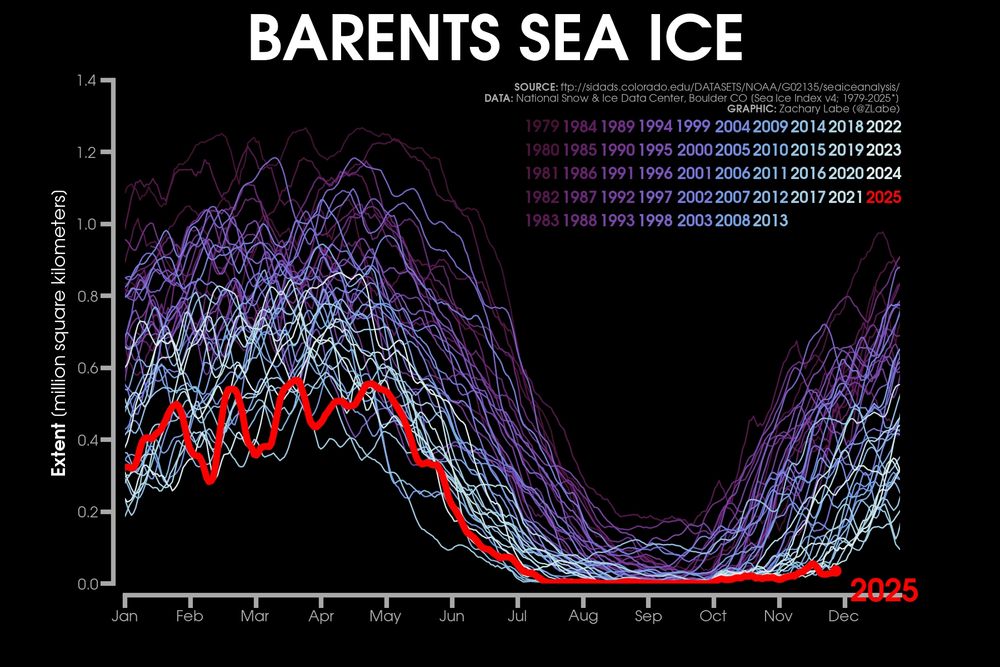
Check out more graphics here: zacklabe.com/arctic-sea-i...
• about 910,000 km² below the 2010s mean
• about 1,500,000 km² below the 2000s mean
• about 2,170,000 km² below the 1990s mean
• about 2,660,000 km² below the 1980s mean
Graphics zacklabe.com/arctic-sea-i...

• about 910,000 km² below the 2010s mean
• about 1,500,000 km² below the 2000s mean
• about 2,170,000 km² below the 1990s mean
• about 2,660,000 km² below the 1980s mean
Graphics zacklabe.com/arctic-sea-i...
+ Data from NOAAGlobalTemp version 6.0.0: www.ncei.noaa.gov/products/lan...
+ More information: www.ncei.noaa.gov/access/monit...
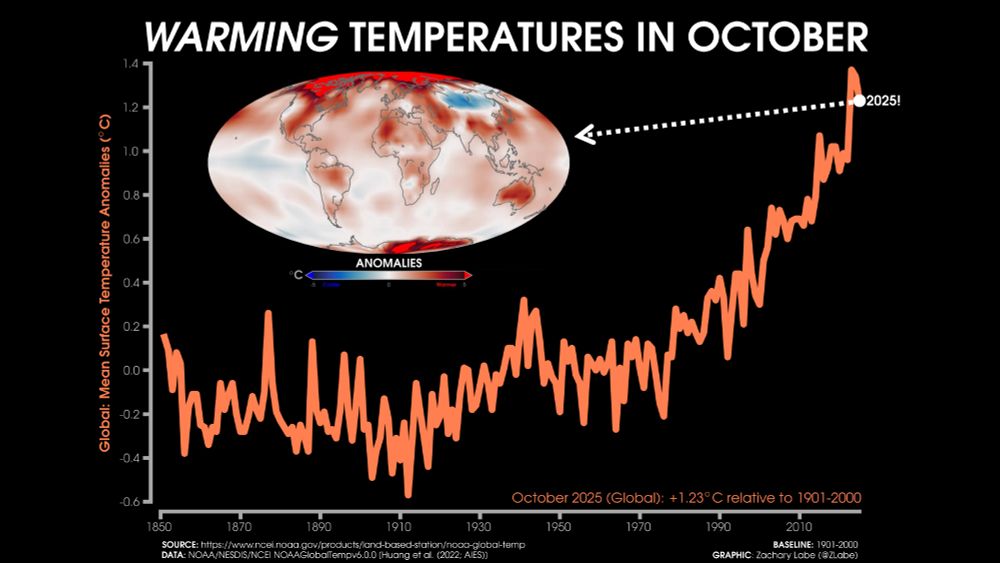
+ Data from NOAAGlobalTemp version 6.0.0: www.ncei.noaa.gov/products/lan...
+ More information: www.ncei.noaa.gov/access/monit...
Grateful for the chance to share science with a wide audience, and even more grateful for all of you who support and encourage this work. Thanks for being here. 🥰
Grateful for the chance to share science with a wide audience, and even more grateful for all of you who support and encourage this work. Thanks for being here. 🥰
Check out some of the weather and climate extremes in your city on Thanksgiving from @climatecentral.org: www.climatecentral.org/climate-matt... 🦃

Check out some of the weather and climate extremes in your city on Thanksgiving from @climatecentral.org: www.climatecentral.org/climate-matt... 🦃
[For more information: doi.org/10.25923/9z9.... Data from NOAA OISSTv2.1]

[For more information: doi.org/10.25923/9z9.... Data from NOAA OISSTv2.1]
Data from @noaa.gov: www.ncei.noaa.gov/products/lan...

Data from @noaa.gov: www.ncei.noaa.gov/products/lan...
Data from @nsidc.bsky.social at nsidc.org/data/seaice_...
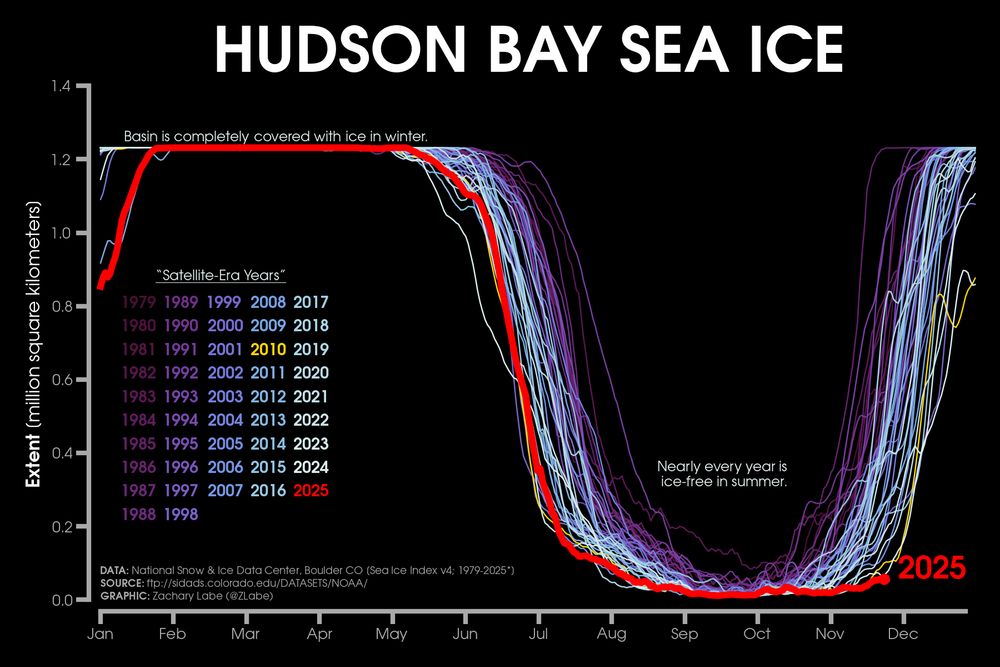
Data from @nsidc.bsky.social at nsidc.org/data/seaice_...
Plot shows zonal-mean temperature anomalies, where latitude = y-axis (not scaled by distance). GISTEMPv4 data using their 1951-1980 baseline.

Plot shows zonal-mean temperature anomalies, where latitude = y-axis (not scaled by distance). GISTEMPv4 data using their 1951-1980 baseline.
🌡️Find past and forecast global temperature anomalies using our Climate Shift Index tool. ⬇️
csi.climatecentral.org/climate-shif...
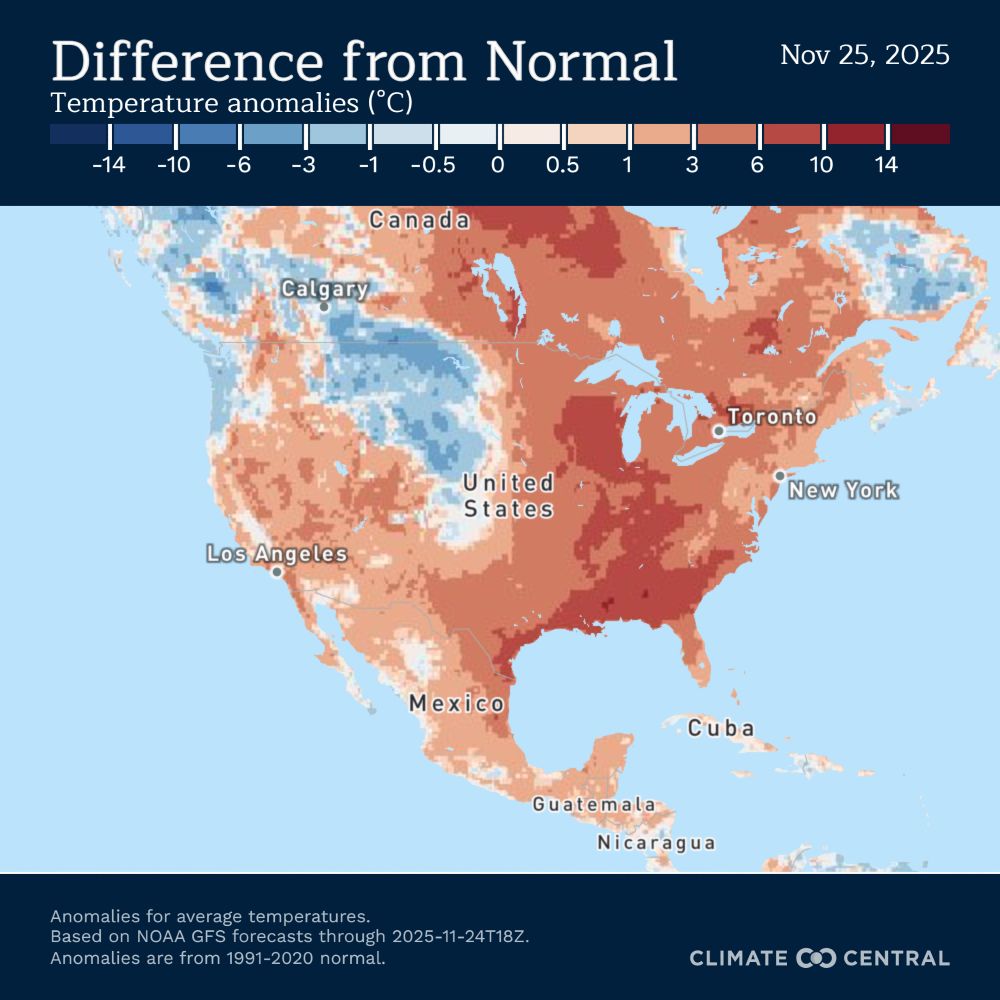
🌡️Find past and forecast global temperature anomalies using our Climate Shift Index tool. ⬇️
csi.climatecentral.org/climate-shif...
Data from doi.org/10.24381/cds...
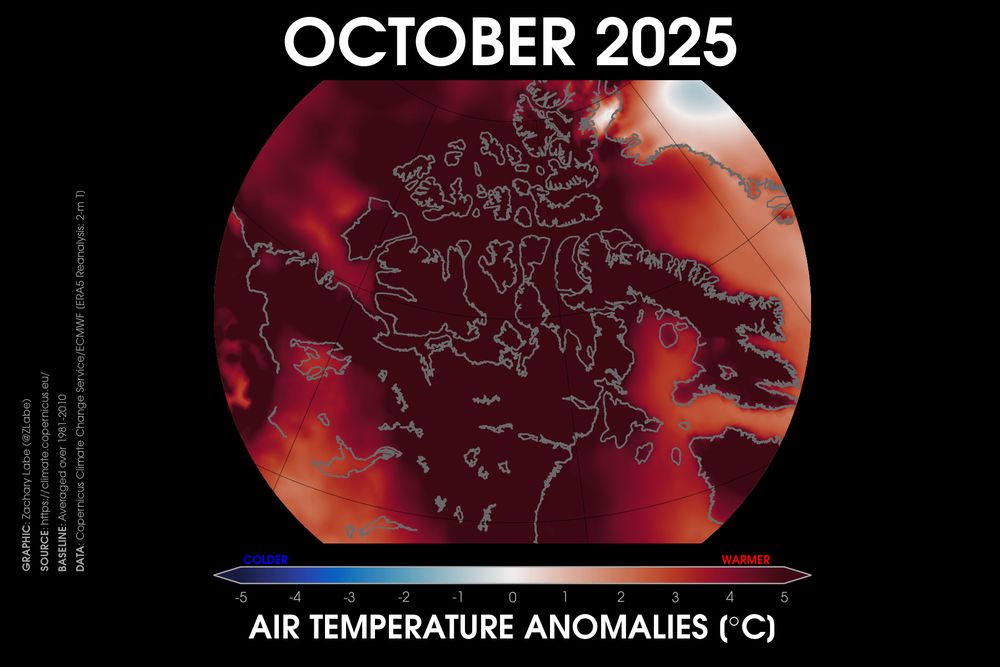
Data from doi.org/10.24381/cds...
• about 770,000 km² below the 2010s mean
• about 1,390,000 km² below the 2000s mean
• about 2,010,000 km² below the 1990s mean
• about 2,530,000 km² below the 1980s mean
More zacklabe.com/arctic-sea-i...

• about 770,000 km² below the 2010s mean
• about 1,390,000 km² below the 2000s mean
• about 2,010,000 km² below the 1990s mean
• about 2,530,000 km² below the 1980s mean
More zacklabe.com/arctic-sea-i...

